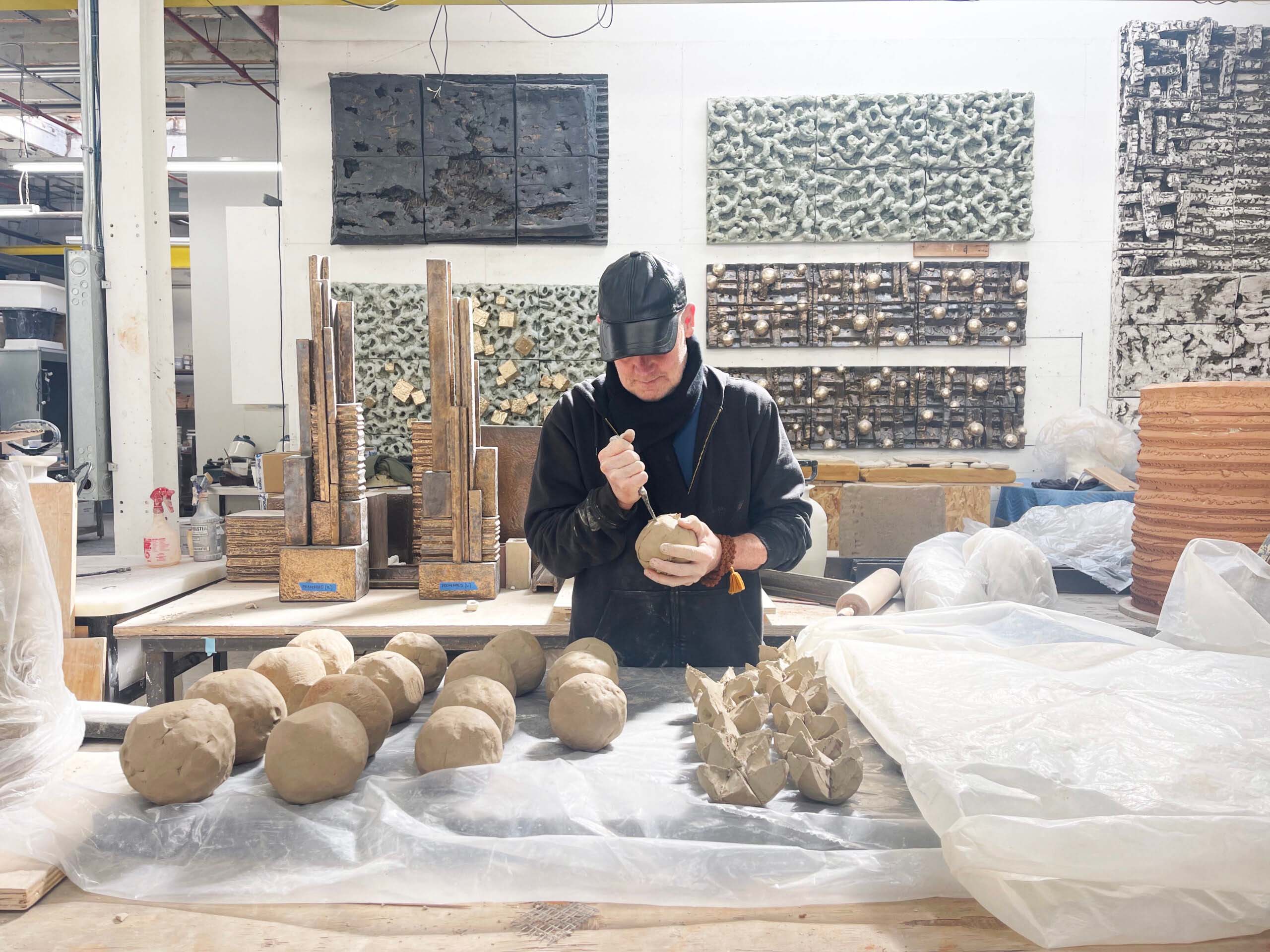
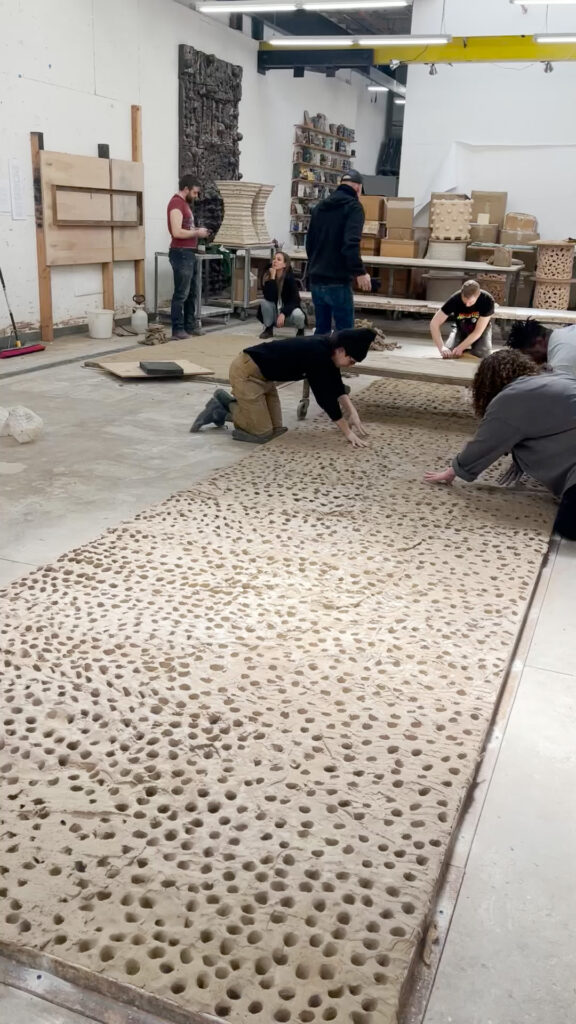
The team starts at 10 AM. A group of eight artists lay stoneware clay on the concrete floor of the sun-bathed Bushwick studio in Brooklyn, New York. The air is fragrant with freshly sliced cilantro and simmering veggies in a stewy base of yellow lentils. The sound of the team chatting and laughing and Björk quavering from the speakers echoes throughout the 10,000-square-foot space.
Peter Lane comes out of his office—he’s wearing a black hoodie, blue jeans, and sneakers all layered with a veil of clay dust. His inviting blue eyes greet me as he takes my coat and introduces me to everyone on his team. “This is Tracy, the chef, and a painter. River has worked here for three years, Trevor and Derek for six…”
Like a symphonic ritual, the team knows their places and cues—kneeling on foam pieces and wooden rolling plinths—massaging, stepping, slapping, and kneading the clay in harmony. As the conductor, Peter walks around, directing, listening, and tracing the clay with a stick.
Peter gives me a tour: In the front of the studio, there’s an open space for the production of his large wall installations. Mementos of the past, including tiles from his Hôtel de Crillon project in Paris, are displayed everywhere like a gallery. Cardboard crates are filled with plastic-wrapped clay; tables are piled with test glazes and drying clay; shelves are crowded with ceramics by artists including those created by his team; and on a clean surface, there’s a stack of his recently published monograph Peter Lane: Clay.
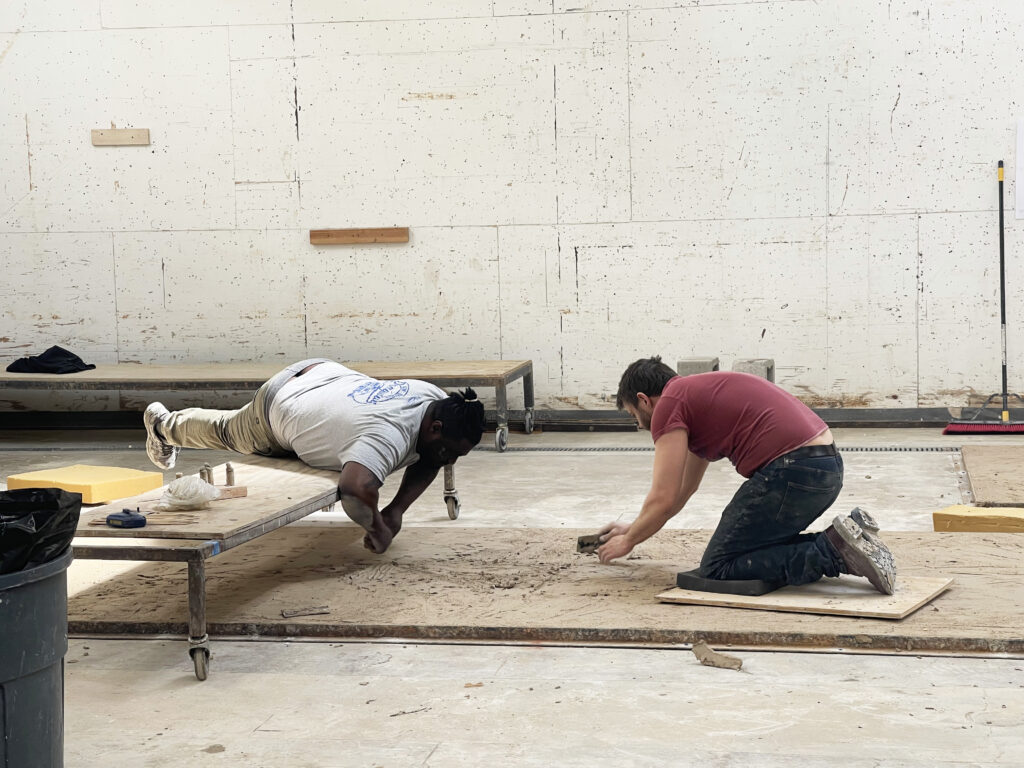
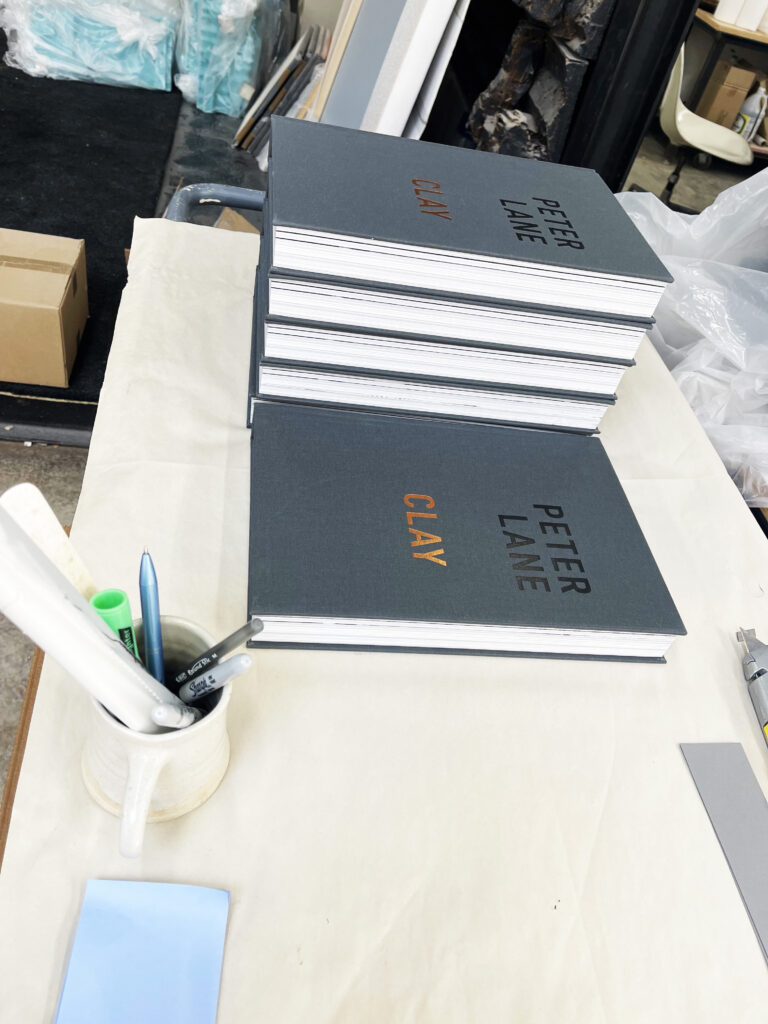
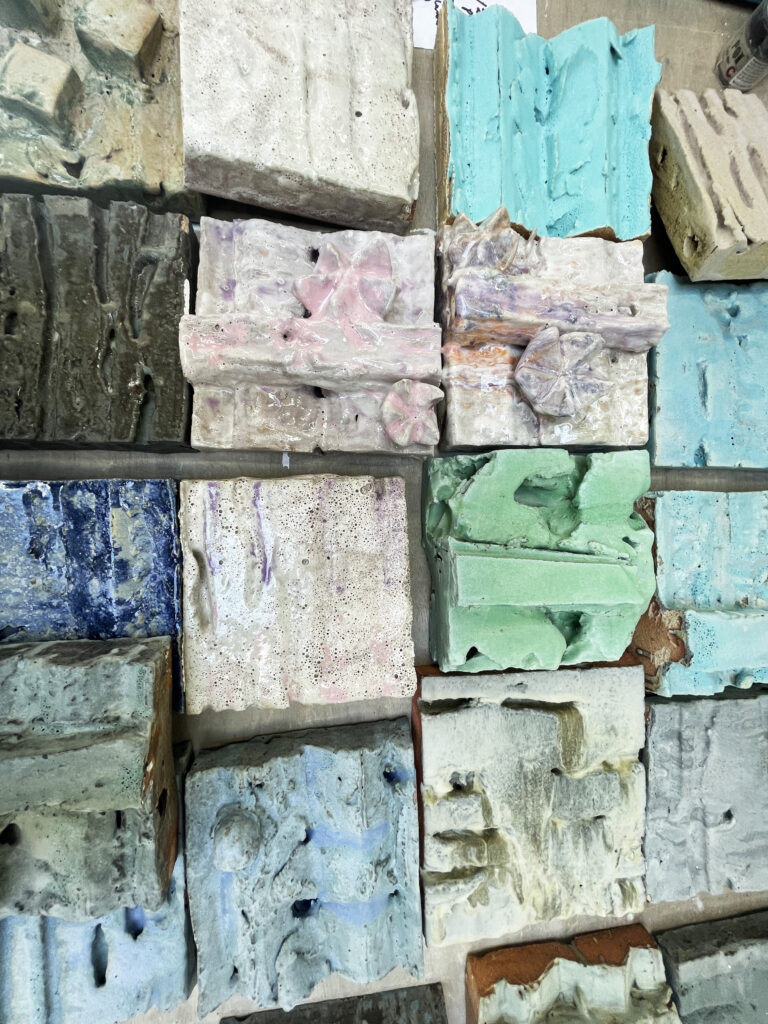
Peter is generous with his profuse compliments of his team (many of whom are resident artists) and their work: he speaks excitedly about Trevor King’s whimsical structures, which are displayed by the entrance of the studio, and in the back, he shows me Derek Weisberg’s figurative and painterly sculptures sitting opposite River Valadez’s tables.
The team works on multiple projects simultaneously—five presently. The big project that began today is a wall piece for the new Four Seasons Hotel in London which was formally the American Embassy. “It didn’t take long until the security needs of the American Embassy needed to be stronger. Now there’s a beautiful building that’s turned into an inviting palatial use. It's going to be very fantastic.”
He continues, “I heard about the [American] Embassy project five years ago and reached out to people.” But it wasn’t until he heard from Chahan Minassian, a designer he frequently collaborates with, that he started sketching out the plans. “Chahan is the designer of the restaurant. He’s a big supporter of my work and I’m very appreciative. We’re a natural pairing.” The piece will be installed in the PavYllon Restaurant of the new Four Seasons which is set to open on June 1st.
Lunch is at 1 PM. The team circles around like a flock of famished pigeons, peaking their beaks, inquiring about the menu, and helping set the table. Today, Tracy prepared a kale salad, curry, rice, and a loaf of pumpernickel bread enough to feed a dozen people. The artists from the adjoined studio also come in. The conversations revolve around the kiln firing schedule and what they did over the weekend.
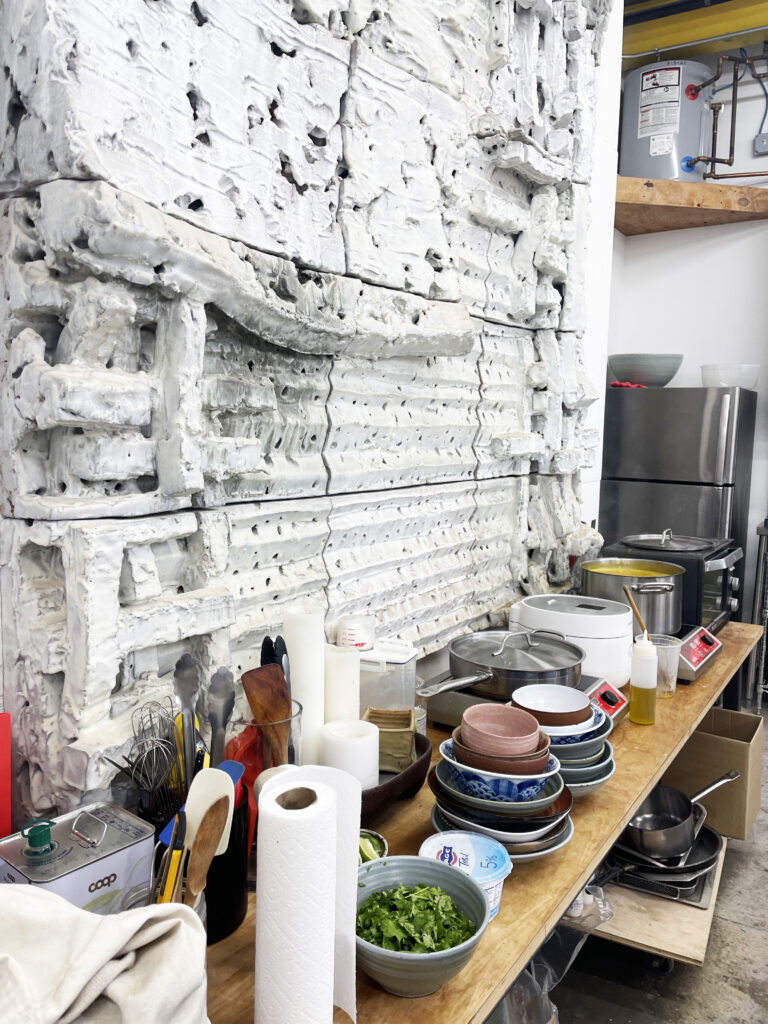
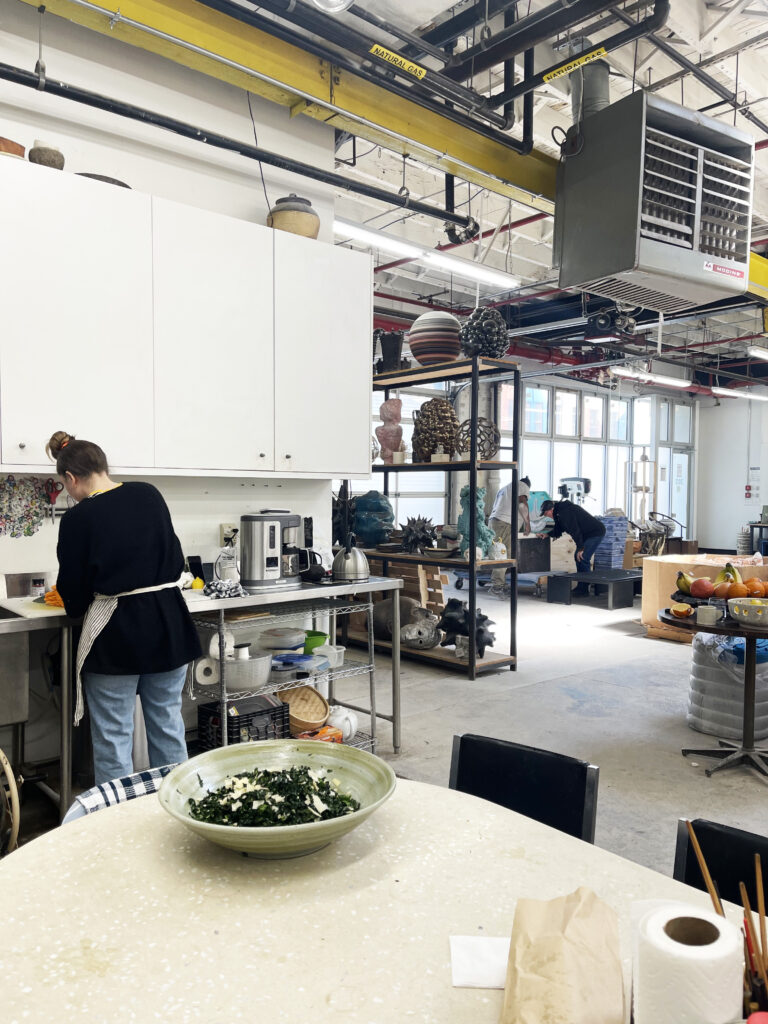
After lunch, the team continues working. The sizable clay slab is now unrecognizable with carved details and ruled blue lines indicating where the clay will be sliced. Shizue Imai, a ceramicist and long friend of Peter’s hands me a cup of green tea as we speak about her relationship with Peter.“I met Peter at the Greenwich House Pottery twenty years ago. He was an assistant and the next semester he was the sub-teacher and I took his class. Long time ago, long, long time ago…like twenty years ago. I was so impressed because he’s working seven days a week. Everyday. Work, work, work.”Peter fondly recounts his time at the Greenwich House Pottery, “I was lucky early on when I was a student in Greenwich House [Pottery] because I had friends who were interior designers and architects. I was making this birch bar texture and a friend asked me if I could make a pair of lamps. And I thought that’s so corny and stupid—why would I make lamps? And then he said ‘how about 300 dollars each,’ which was more than my rent at that time so I was like ‘yeah, sure.’”Peter accounts his success and longevity to his art being integrated with design: “The study of art is divorced from making a living. So my art practice is tied to interior design or architecture as opposed to an abstraction. The collectible stratus is much smaller than of interior design and there seems to be no end to the desire for lamps.” The desire for lamps is certainly abundant as Peter’s studio is filled with bases including 60 lamps commissioned by Dior that will be sent to each flagship store.
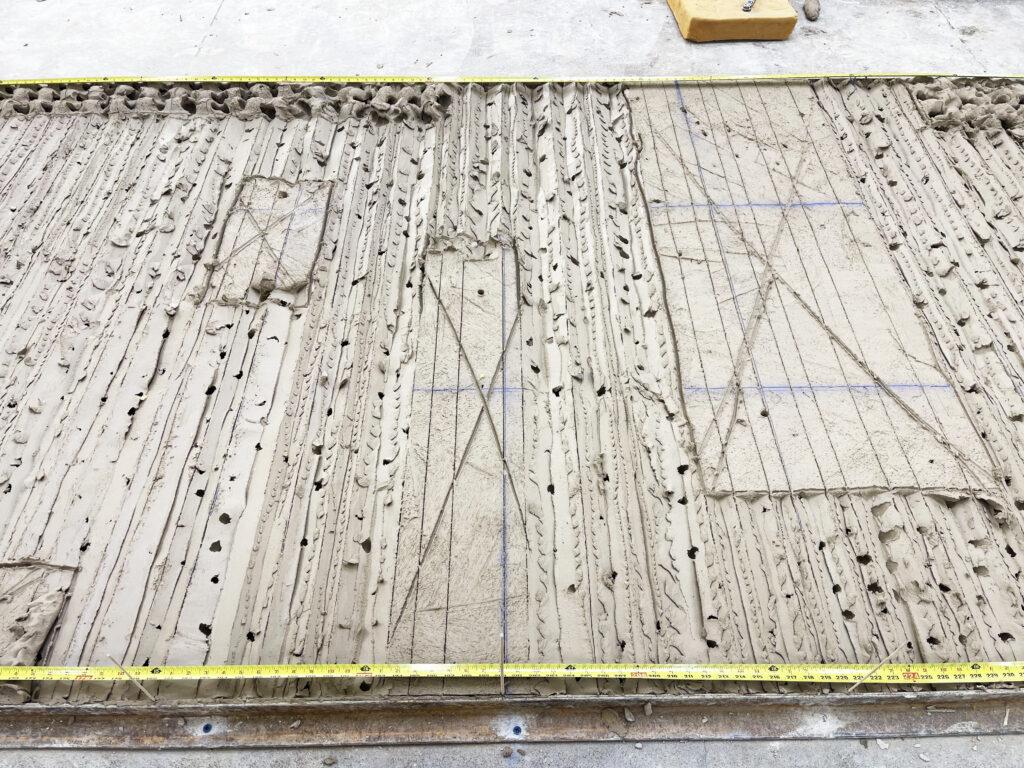
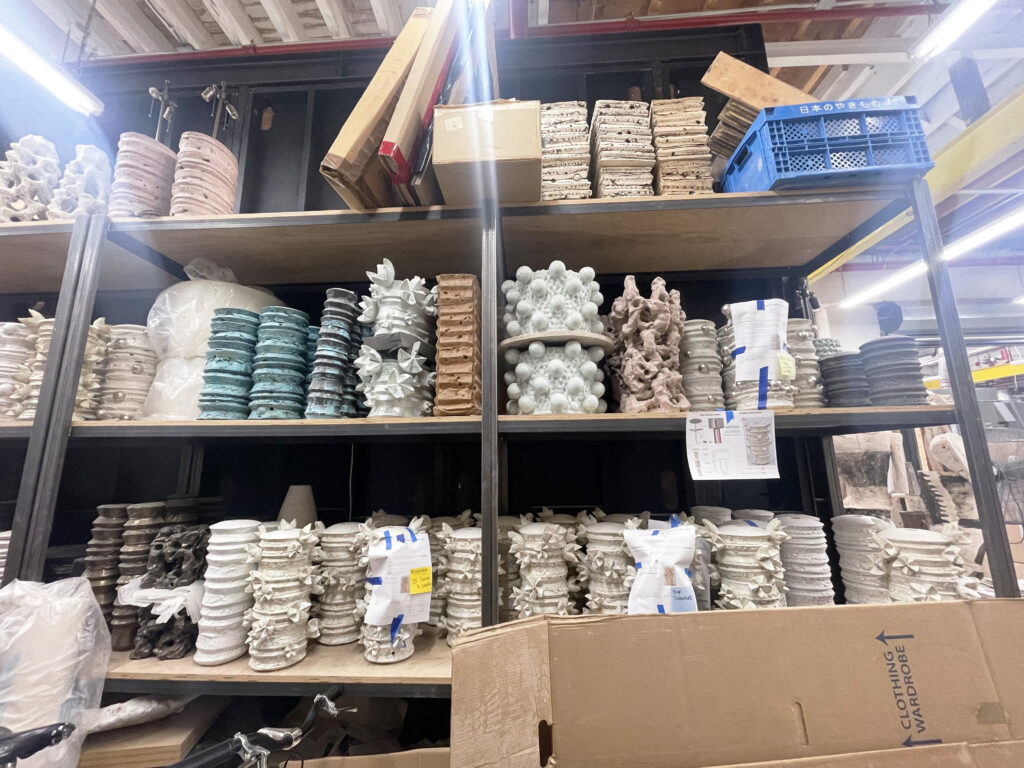
Peter stands in front of a wooden board with clay balls. He rolls the balls and slices them into halves, creating angular flowers that will be attached to the wall installation. River wheels in a table freshly out of the kiln. The team surrounds the piece. Peter wonders whether the table needs another coat of glaze as it came out darker than desired. “There’s humility with ceramics…” I note as Peter shows me another piece that needed to be recreated due to firing issues. “Well, ceramics is humiliating because it breaks and blows up, and you have to start all over again. It doesn’t always come out as you want it to and the material really guides you—you only have a certain amount of control. It’s the natural physical nature of the materials that will make you humble.”
Peter’s affinity and reverence for clay exceed beyond the material itself and into the clay community: “The openness of ceramic and ceramic culture is a very fantastic aspect of ceramic culture in America. After the Second World War, ceramic culture was built from community centers, not universities. As a result, it’s very open and generous, and free.”
Openness, generosity, and humility are also characteristics of the environment in his studio—a high contrast from other artist studios that have been described as factories or toxic or even abusive workspaces, where the ego of an artist overrides the wellness of his mentees.
“I have eight people who have done it for years. I’ve done this by myself with just one or two people doing it. I learned my lesson. It’s much easier to do it with a big group, and it’s more fun, and no one gets tired. No one gets sick of it. We get to see the results boom just like that. It’s much more enjoyable.”
“I’m so grateful to have a team who are more talented than me, younger, more beautiful. I’m just this old crust, so lucky me. Let’s keep the ball rolling.”
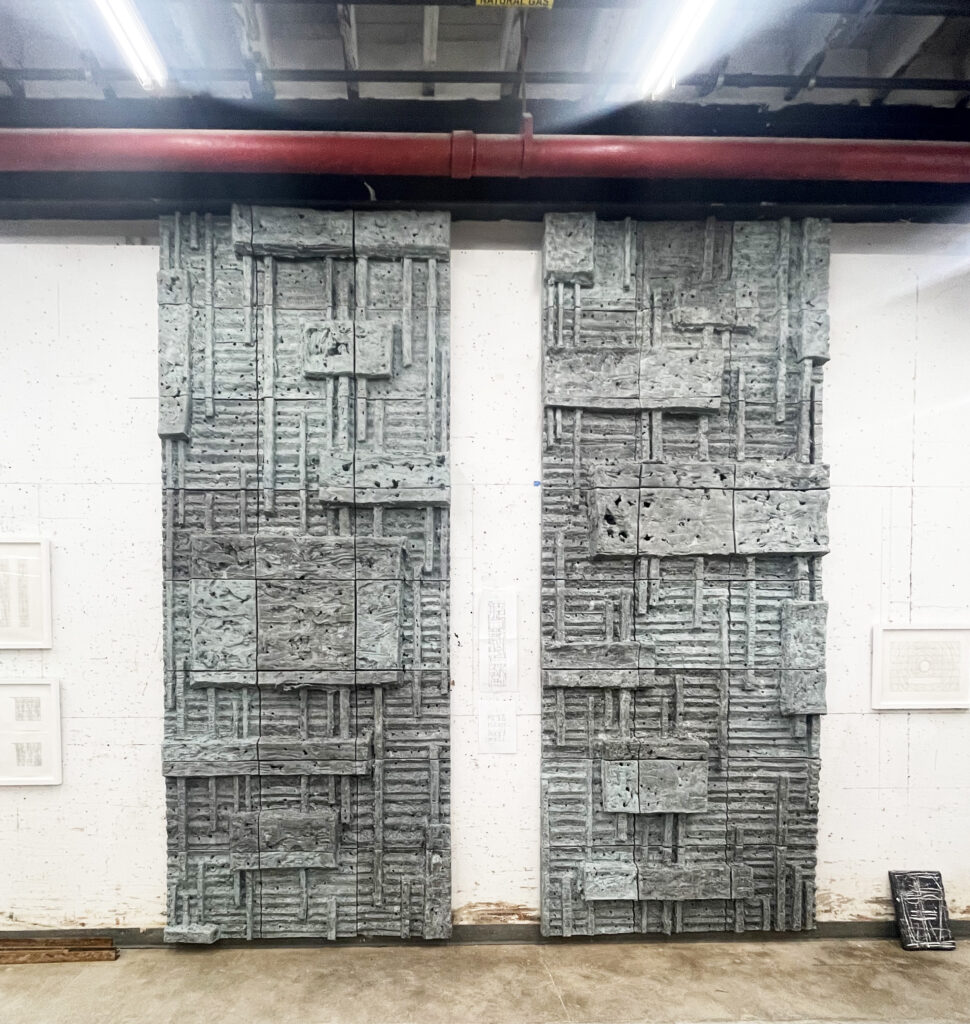
To explore and learn more about Peter Lane, CLICK HERE.
